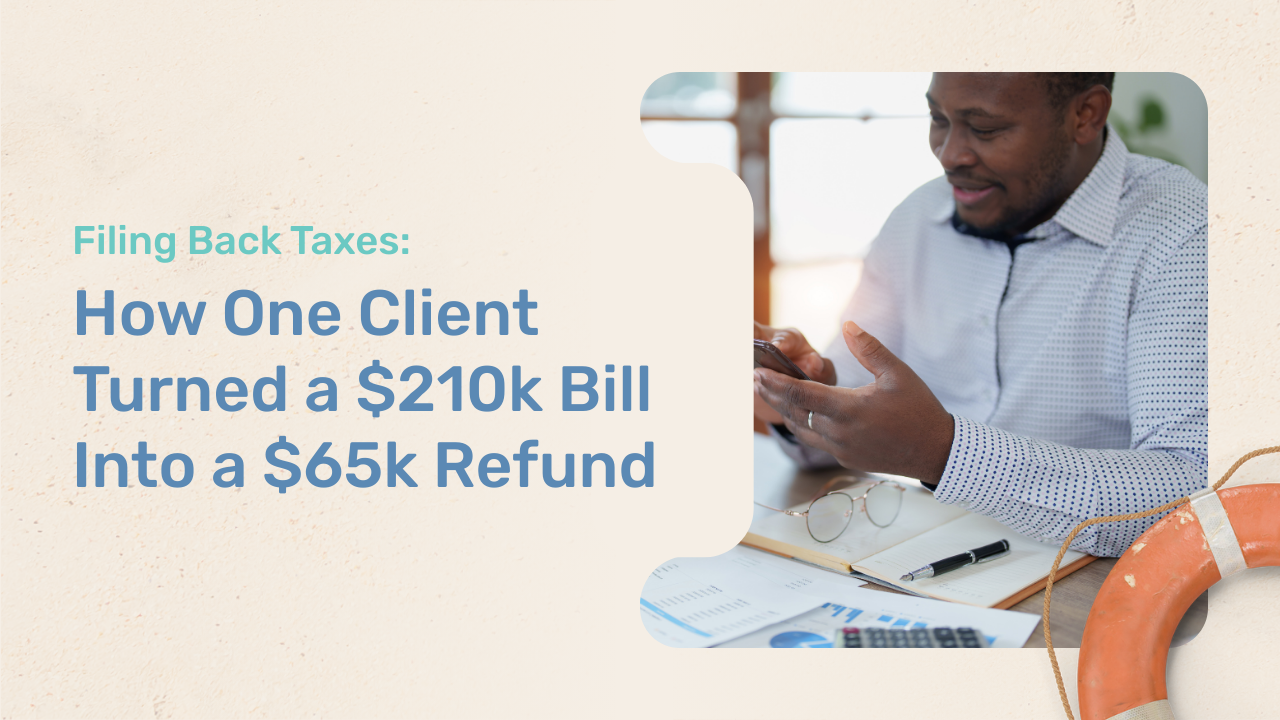
Few things create more anxiety than receiving a letter from the IRS in your mailbox. For many taxpayers, it immediately raises questions:
Did I make a mistake?
Am I in trouble?
How much do I owe?
Among the most serious types of IRS correspondence are the Notice of Deficiency and the Notice of Determination. These letters can look intimidating, but they don’t always mean you’ve done something wrong. They simply mean the IRS believes there’s an issue with your return or balance and wants to make an adjustment.
An IRS Notice of Deficiency and Notice of Determination might sound like two separate problems, but both serve a similar purpose: they alert you that the IRS is proposing a change and that you have a limited time to respond before that change becomes final. Ignoring them can lead to additional taxes, penalties, or enforced collections.
In this article, we’ll explain what these notices mean, how they differ, and what steps to take if you receive one. You’ll also learn how working with an experienced enrolled agent can help you respond quickly and take the right steps to resolve your case before it escalates.
What Is an IRS Notice of Deficiency?
A Notice of Deficiency (CP3219N) is one of the most important letters the IRS can send. Often called a “90-day letter,” it’s issued when the IRS believes you owe additional tax after reviewing your return. This might happen after an audit, a review of income reported by employers or banks, or a correction to deductions or credits.
In simple terms, the IRS is saying: We think you owe more money, and here’s why. The notice will outline the proposed changes to your tax return and how much the IRS believes you now owe, including any penalties or interest.
What makes this letter so important is the deadline attached to it. You typically have 90 days from the date of the notice to respond. During this window, you can challenge the IRS’s findings, submit additional documentation, or work with a tax professional to prepare a response. If you don’t act within that timeframe, the IRS will assess the tax and begin collection efforts, which can include liens, levies, or wage garnishment.
While receiving a notice of deficiency can feel intimidating, it’s also an opportunity to correct errors or present new information before the IRS finalizes its decision. Acting quickly and getting professional guidance can make all the difference in achieving a fair outcome.
What Is an IRS Notice of Determination?
A Notice of Determination is another official letter from the IRS that signals the agency has made a final decision about your tax matter. While a notice of deficiency usually relates to proposed changes on your tax return, a notice of determination often follows a Collection Due Process (CDP) hearing or an appeal involving a tax debt, lien, or levy.
In other words, the notice of determination is the IRS’s way of saying, We’ve reviewed your case, and here’s our final decision on how to proceed. It might confirm the IRS’s right to collect a debt, uphold a lien, or deny a relief request. Importantly, this notice gives you a final chance to take action before enforcement begins.
The response timeline is shorter for this notice. You generally have 30 days from the date of the letter to challenge the IRS’s decision or explore your remaining options. Missing this deadline can make it much harder to resolve your situation, since the IRS can move forward with collection actions once the period expires.
Like the notice of deficiency, the notice of determination should never be ignored. It’s a signal that the IRS has completed its internal process, and it’s time to take your next step. With help from a qualified tax professional, you can review the details of the notice, understand what it means for your specific situation, and take the appropriate action before deadlines pass.

Notice of Deficiency vs. Notice of Determination: The Key Differences
While both letters signal that the IRS believes something needs to be resolved, a notice of deficiency and a notice of determination apply to different stages of the process. Understanding which one you’ve received is the first step to taking the right action.
A notice of deficiency usually comes earlier in the process, after the IRS reviews your return and decides that you owe additional tax. You have 90 days to respond before the IRS finalizes the assessment.
A notice of determination, on the other hand, typically comes later, after you’ve already been involved in an appeal or a Collection Due Process hearing. It represents the IRS’s final decision on how your case will move forward, and you generally have 30 days to respond.
Despite these differences, both notices share one crucial point: you must act quickly. Missing the deadline can limit your ability to dispute the IRS’s findings and may lead to enforced collection actions such as liens, levies, or wage garnishments.
How the Tax Court Process Can Help You Resolve an IRS Notice
When you receive a notice of deficiency or determination, one of the most effective ways to resolve it may be through the U.S. Tax Court process. This option allows you to dispute the IRS’s findings before paying the additional tax the agency claims you owe.
Going through Tax Court offers several benefits:
- It halts collection activity while your case is under review.
- It gives you a chance to have your situation evaluated by an independent judge.
- Many cases are settled or resolved before ever reaching trial.
For many taxpayers, using the tax court process can lead to a fair and efficient resolution. While enrolled agents cannot represent clients directly in Tax Court, they play a crucial role in helping taxpayers prepare petitions, gather documentation, and navigate the process effectively.
At Tax Lifeline, Kevin helps clients take the right steps when a case may benefit from Tax Court involvement, ensuring all filings and deadlines are handled correctly from the start.
What to Do If You Receive One of These Notices
Receiving a notice of deficiency or determination can feel overwhelming, but the most important thing you can do is stay calm and take action quickly. These letters are the IRS’s way of telling you that something needs attention, not a reason to panic.
Start by reading the notice carefully. Make sure you understand what the IRS is proposing and confirm that the information matches your records. Note the response deadline on the letter and mark it on your calendar so you don’t miss it.
Next, contact a qualified tax professional, such as an enrolled agent, who can help you review the notice and determine the best way to respond. A professional can assess whether the IRS’s adjustments are correct, prepare supporting documentation, and communicate with the IRS on your behalf. Acting early gives you the best chance to resolve the issue before it turns into a larger problem.
At Tax Lifeline, we help taxpayers navigate IRS notices with confidence. Whether you’ve received a notice of deficiency, a notice of determination, or another type of IRS letter, our team can help you review your options and take the right steps toward resolution.
If you’ve recently received a letter from the IRS, don’t ignore it or try to handle it alone. Reach out to Tax Lifeline for support from an experienced enrolled agent who can help you respond effectively and protect your financial peace of mind.
Ready to be pulled to safety?
Grab the lifeline and let’s get you the freedom from tax debt you deserve!
Schedule A Consultation


